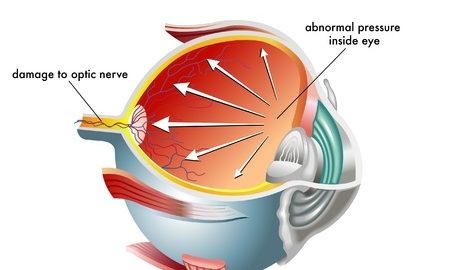Glaucoma Research: An Eye on the Future

With an eye on the future, the International Glaucoma Association and the UK and Eire Glaucoma Society have released funding to Professor Colin Willoughby and Dr. Carl Sheridan of the University of Liverpool’s Institute of Ageing and Chronic Diseases. This stimulus fund will be used to develop stem cell treatments for glaucoma. The type of grant that has been awarded is given to fund initial research, based on which more detailed research can be performed in the future.
In the normal human eye, a fluid called the aqueous humor is continuously produced and flows out of the eye through a network of mesh-like channels. This maintains a constant pressure inside the eye. A blockage in these channels can cause the pressure inside the eye (intraocular pressure) to gradually build up. This eventually damages the optic nerve which transmits signals to the brain. If unrelieved, this high pressure can lead to a permanent loss of vision within a short span of time.
Glaucoma does not cause any symptoms in the early stages. There is no pain in the eyes from the increased pressure. Therefore, regular eye examinations every one to two years are important to detect the disease early in its course before permanent blindness occurs. People who are over the age of 40, have a family history of glaucoma, or are diabetic are at higher risk.
Researchers believe that replacing the trabecular meshwork cells that have progressively been lost can have therapeutic benefits in the treatment of glaucoma. The hope is that adult stem cells can be used to repair the outflow pathway and reduce the intraocular pressure.
The grant will allow scientists to extract genetic information from these stem cells. By sequencing more than 20,000 genes, the researchers will examine the changes that take place in these cells. The experiments will give them a better understanding of how genes are controlled and which genes are active in these cells. “The aim is to achieve a functioning outflow pathway as a new treatment strategy for glaucoma by either activating the patient’s own stem cells or using donor stem cells,” explains Professor Colin Willoughby.
Currently, doctors attempt to lower the intraocular pressure by utilizing laser therapy, and this may indirectly activate stem cells locally in the eye and improve the functioning of the trabecular meshwork. To build upon this therapeutic approach, the scientists want to examine the effect of donor stem cells delivered to the eye to improve drainage of the aqueous humor. The grant will help in the development of molecular mechanisms that control trabecular meshwork stem cells as the initial step in translating this theory into clinical application.
References:
- http://www.news-medical.net/news/20160923/Researchers-receive-grant-to-help-develop-stem-cell-therapy-for-glaucoma.aspx
- http://www.webmd.com/eye-health/glaucoma-eyes#1


